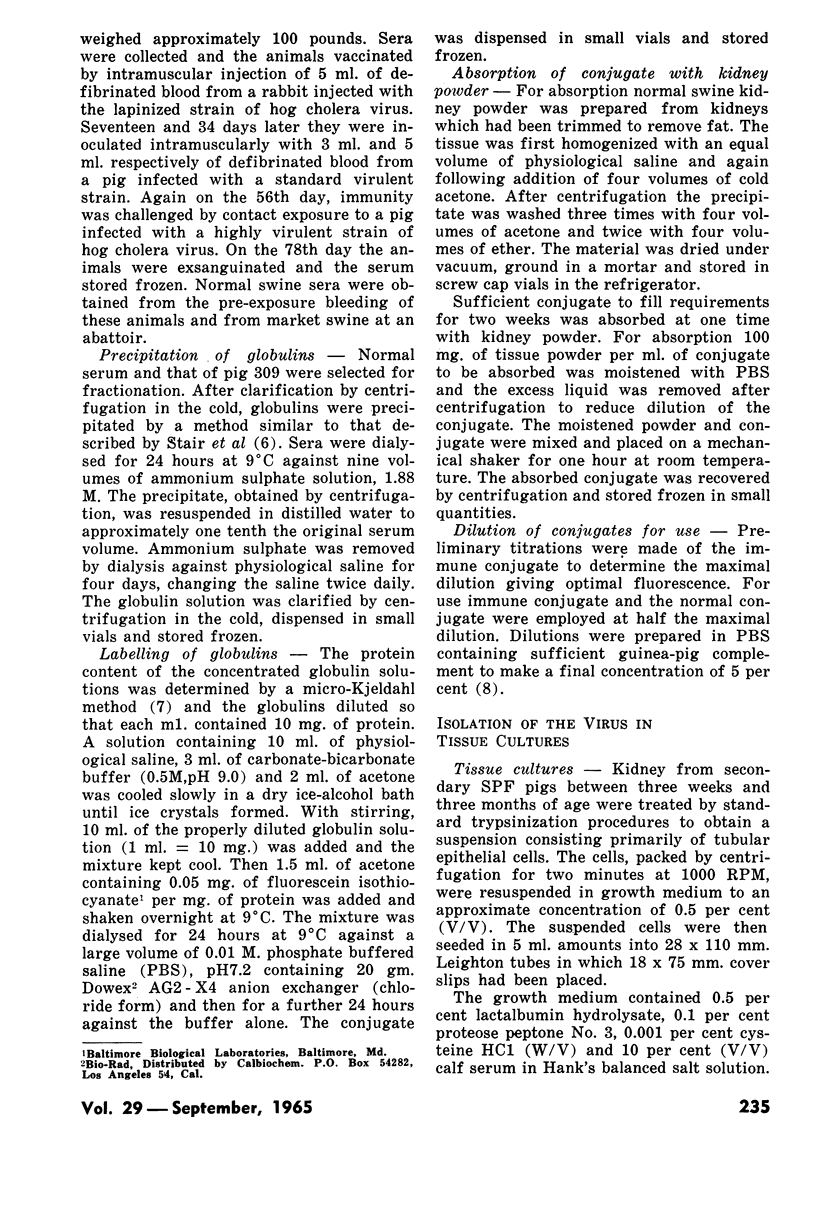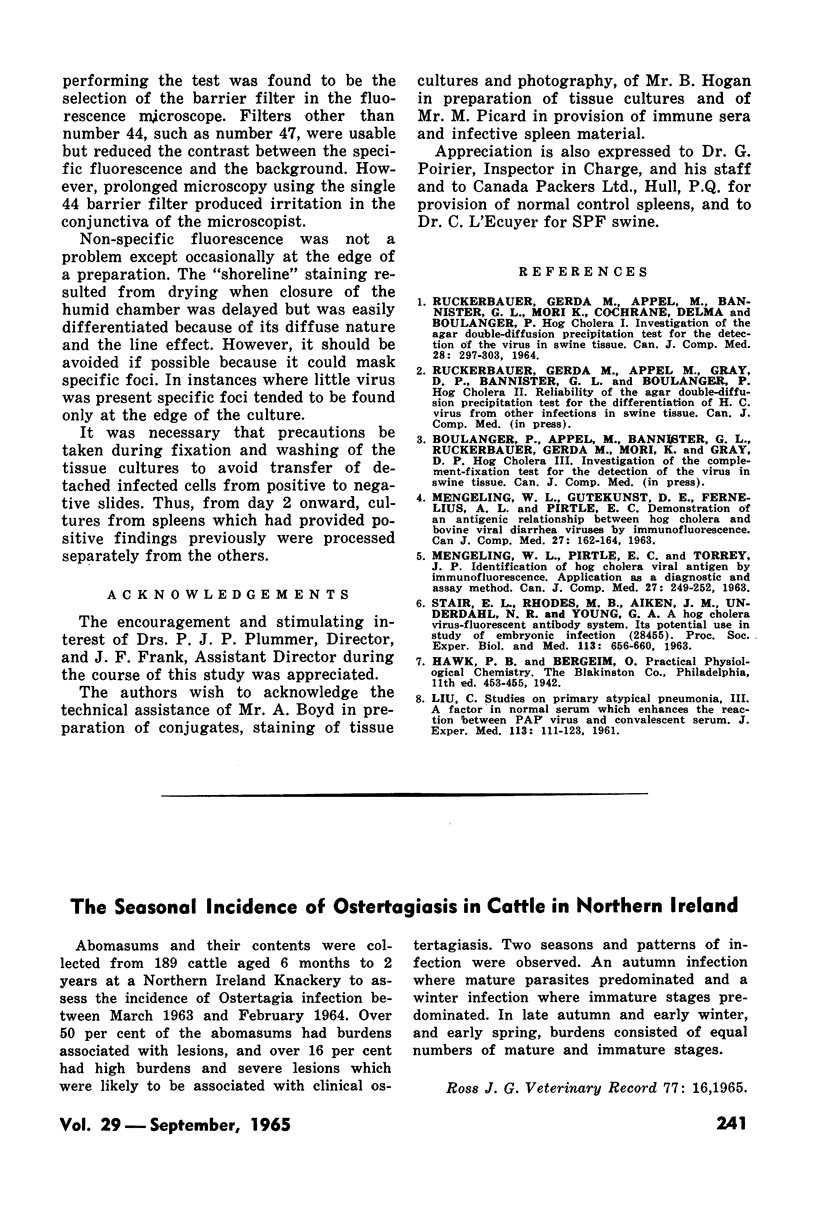Abstract
The fluorescent-antibody technique was employed for detection of hog cholera virus in tissue cultures inoculated with spleens of infected animals. As controls, cultures were also inoculated with material from normal swine and from those infected with other agents. In the first series 71 of 73 infected spleens, or 97 per cent, were detected. There were no false positive reactions among the controls. Results obtained with the second series of pigs showed that spleens collected during advanced stages of the disease were more satisfactory specimens than those collected earlier during the high temperature phase of infection. Findings with the third series of older swine indicated that their spleens were less satisfactory as a source of virus than those from young pigs. Tissues from freshly killed animals provided better specimen material than those from animals which had died.
Full text
PDF







Images in this article
Selected References
These references are in PubMed. This may not be the complete list of references from this article.
- LIU C. Studies on primary atypical pneumonia. III. A factor in normal serum which enhances the reaction between PAP virus and convalescent serum. J Exp Med. 1961 Jan 1;113:111–123. doi: 10.1084/jem.113.1.111. [DOI] [PMC free article] [PubMed] [Google Scholar]
- Mengeling W. L., Gutekunst D. E., Fernelius A. L., Pirtle E. C. Demonstration of an Antigenic Relationship Between Hog Cholera and Bovine Viral Diarrhea Viruses by Immunofluorescence. Can J Comp Med Vet Sci. 1963 Jul;27(7):162–164. [PMC free article] [PubMed] [Google Scholar]
- Mengeling W. L., Pirtle E. C., Torrey J. P. Identification of Hog Cholera Viral Antigen by Immunofluorescence. Application as a Diagnostic and Assay Method. Can J Comp Med Vet Sci. 1963 Oct;27(10):249–252. [PMC free article] [PubMed] [Google Scholar]
- Ruckerbauer G. M., Appel M., Bannister G. L., Mori K., Cochrane D., Boulanger P. Hog Cholera: I. Investigation of the Agar Double-Diffusion Precipitation Test for The Detection of the Virus in Swine Tissue. Can J Comp Med Vet Sci. 1964 Dec;28(12):297–303. [PMC free article] [PubMed] [Google Scholar]
- STAIR E. L., RHODES M. B., AIKEN J. M., UNDERDAHL N. R., YOUNG G. A. A hog cholera virus-fluorescent antibody system. Its potential use in study of embryonic infection. Proc Soc Exp Biol Med. 1963 Jul;113:656–660. doi: 10.3181/00379727-113-28455. [DOI] [PubMed] [Google Scholar]




